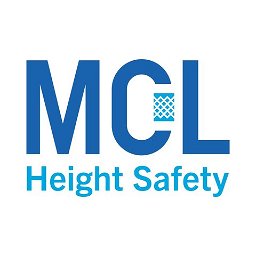- Professional Development
- Medicine & Nursing
- Arts & Crafts
- Health & Wellbeing
- Personal Development
20 Courses about Working At Heights in Hull
Trainer to Candidate Ratio: Working at Height Theory: 12 Students to 1 instructor; Practical: 6 Students to 1 instructor Frist Aid Theory: 12 Students to 1 instructor; Practical: 6 Students to 1 instructor Manual Handling Theory: 12 Students to 1 instructor; Practical: 12 Students to 1 instructor Fire Awareness: Theory: 12 Students to 1 instructor; Practical: 6 Students to 1 instructor Sea Survival: Theory: 12 Students to 1 instructor; Practical: 6 Students to 1 instructor Enhanced First Aid: Theory: 12 Students to 1 instructor; Practical: 6 Students to 1 instructor Advanced Rescue Training: Theory: 12 Students to 1 instructor; Practical: 4 Students to 1 instructor

Course Objectives The delegates are able to demonstrate: knowledge of hazards and risks associated with working at heights, specific to WTG (Wind Turbine Generator). understanding of current national legislation regarding working at heights. correct identification of PPE, including identification of European/Global standard markings e.g. harness, hard hat, lanyards, etc. knowledge and skills to correctly inspect, service, store and don the relevant PPE, e.g. harness, lanyards, fall arresters and work positioning equipment. correct use of the relevant PPE, e.g.harness lanyards, fall arresters and work positioning equipment. This includes correct identification of anchor points and correct ladder conduct. correct use of evacuation devices. how to approach rescue situations in WTGs and use rescue equipment efficiently.

The delegates are able to demonstrate: The participants are able to demonstrate knowledge of hazards and risks associated with working at height specific to a wind turbine generator (WTG) (L2 – Knowledge) The participants are able to demonstrate understanding of current national and regional legislation regarding working at height (L2 – Knowledge) The participants are able to demonstrate correct identification of PPE, including identification of Global and regional standard markings e.g. harness, hard hat, lanyards, etc. (L3 – Skills) The participants are able to demonstrate the knowledge and skills to correctly perform pre-use inspection, service, store and correctly fit relevant PPE, e.g. harness, fall arrest lanyards, guided type fall arrest lanyards and work positioning lanyards (L2 – Knowledge & L3 – Skills) The participants are able to demonstrate correct use of the relevant PPE, e.g. harnesses fall arrest lanyards, guided type fall arresters and work positioning lanyards. This includes correct identification of anchor points and correct conduct on ladder (L3 – Skills) The participants are able to demonstrate correct use of evacuation devices (L3 – Skills) The participants are able to demonstrate how to approach rescue situations in WTGs and use rescue equipment efficiently (L3 – Skills & Ability)

The aim of this module is to enable delegates to perform entry-type injured person rescue operations, in a Wind Turbine Generator, using industry standard rescue equipment, rescue methods and techniques, exceeding those of GWO Working at Heights. Valid GWO BST Module Working at Heights, GWO First aid and GWO Manual Handling certificates are prerequisites for participation.

This course is for persons required to work in specified locations, e.g. MEWP’s, scaffolding, window cleaners, lift engineers and maintenance operatives. The course provides skills, knowledge and competence to select and use the correct harness and lanyard for the work task.

NPORS Safe Working at Height (N404)
By Dynamic Training and Assessments Ltd
Who Should Attend This course is aimed at candidates that require the knowledge to enable them to comply with working at height regulations, and go in depth into industry dangers and respectability when working at height. This course can be completed by both novice and experienced candidates. We also offer refresher tests. Novice course- 1/2 day Experienced worker tests- 1/2 day. Course information Category N404 Safe Working At Height It is envisaged that by the end of this course of training the learner will be able to answer questions on and perform the following: ➢ Have a basic understanding of the industry, the dangers of working in the industry and their responsibilities when working at height ➢ Be able to define height work and identify the hazards of work above ground level and outline the general requirements necessary to control them ➢ Be able to identify accident causation in work at height ➢ Have an appreciation of planning and organisation of work at height ➢ Set up exclusion zone explaining actions required for emergency actions, identifying any overhead hazards ➢ Identify and maintain PPE appropriate for safe working at height use ➢ Demonstrate working at height and explain all safety issues that could arise Assessment Assessment will be to NPORS standards consisting of a theory test.

IPAF Operator Training 3a
By Kingfisher Access
The IPAF operator course instructs a candidate to prepare and safely operate various types of MEWPs, also referred to as cherry pickers, aerial lifts or scissor lifts. Categories include Static Vertical (1a), Static Boom (1b), Mobile Vertical (3a), Mobile Boom (3b), Specialist Machines (SPECIAL), Push Around Vehicle (PAV), Insulated Aerial Device (IAD).Categories include Static Vertical (1a), Static Boom (1b), Mobile Vertical (3a), Mobile Boom (3b),

Educators
Show all 3Search By Location
- Courses in London
- Courses in Birmingham
- Courses in Glasgow
- Courses in Liverpool
- Courses in Bristol
- Courses in Manchester
- Courses in Sheffield
- Courses in Leeds
- Courses in Edinburgh
- Courses in Leicester
- Courses in Coventry
- Courses in Bradford
- Courses in Cardiff
- Courses in Belfast
- Courses in Nottingham





